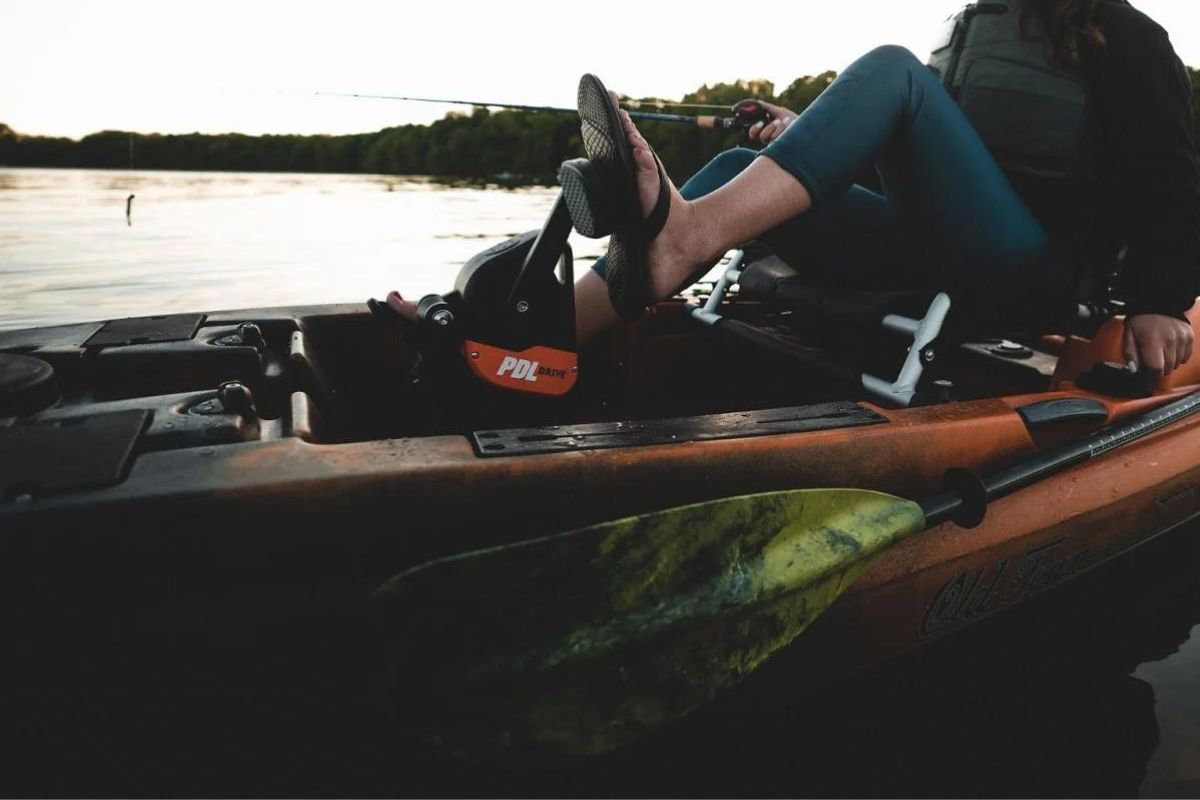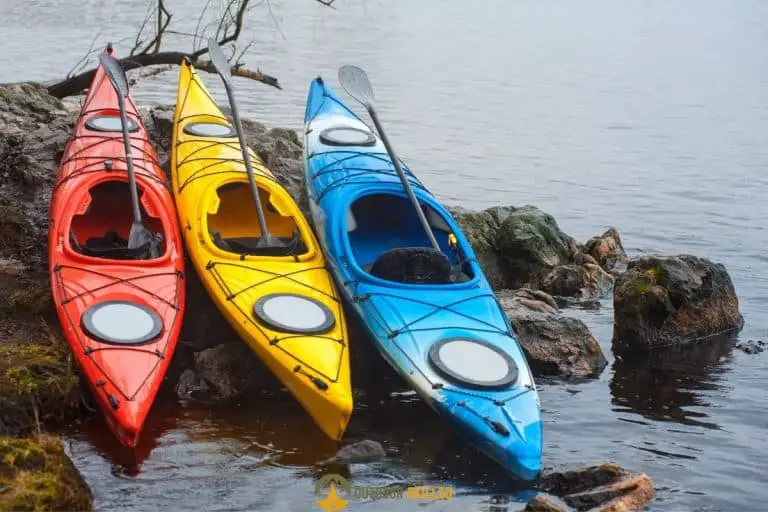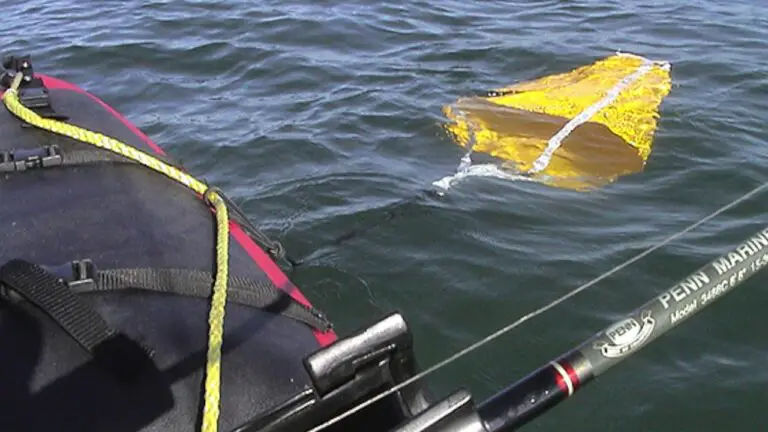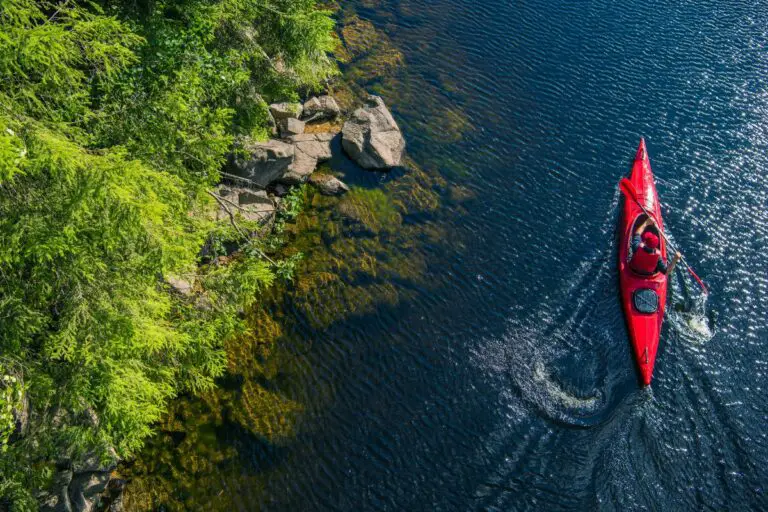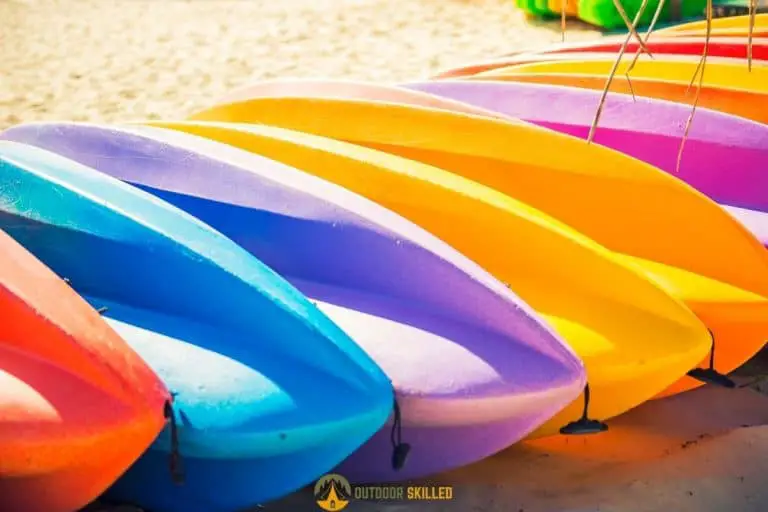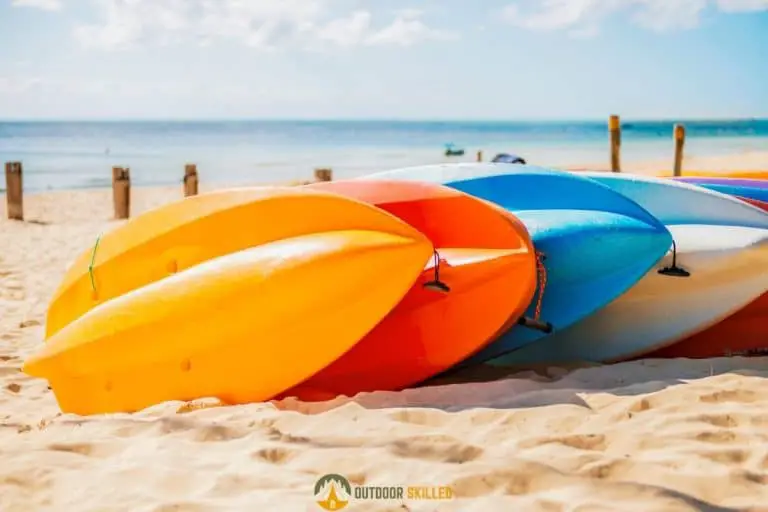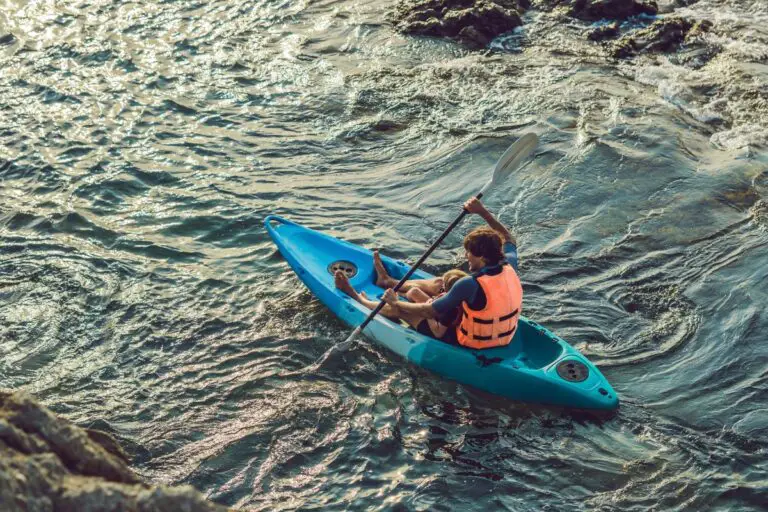How Fast Can You Go on A Pedal Kayak? & How to Make It Go Faster
Traditional paddle kayaks have been the norm for many years, then advancements in technology have given rise to new types of kayaks, like pedal kayaks.
While both types of kayaks offer their own advantages and disadvantages, one of the most frequently asked questions is: how fast can you go on a pedal kayak compared to a paddle kayak?
You can go at about 5 to 8 mph in a pedal kayak, which is considered faster than paddle kayaks. However, the speed of a pedal kayak depends on various factors, including the kayak’s design and material, the weight onboard, water and weather conditions, and the paddler’s skill and physical ability.
Keep reading to learn more about pedal kayaks, the factors that affect their speed, and how to make them go faster.
Table of Contents
What Is A Pedal Kayak?
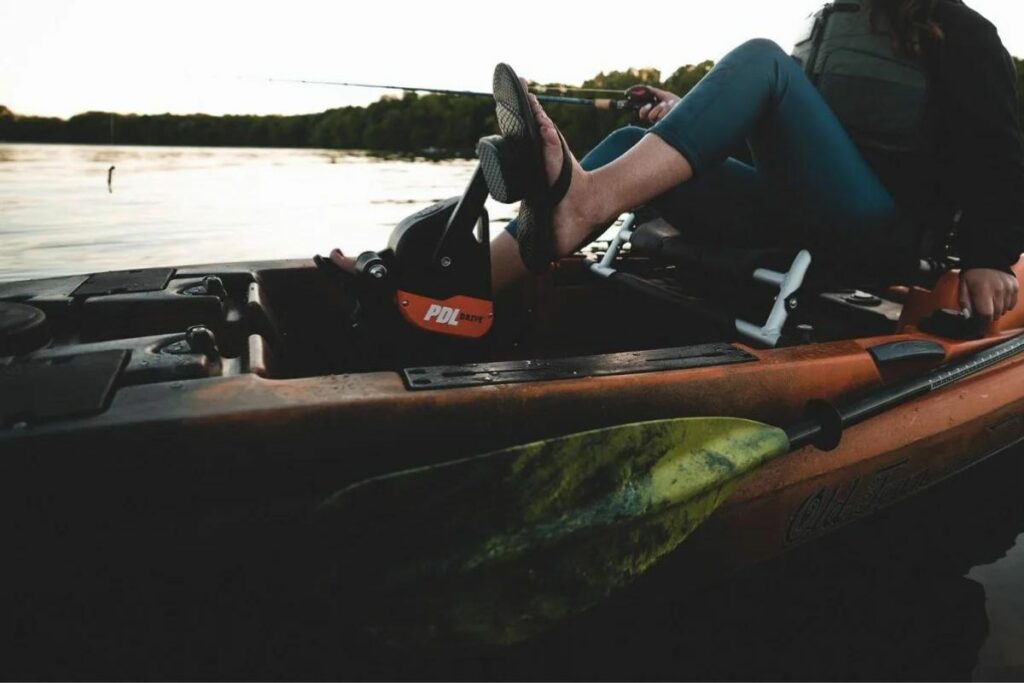
A pedal kayak is a type of kayak equipped with pedals, similar to those found on a bicycle, which powers a propeller or fins located beneath the kayak’s hull.
While paddle kayaks have been the traditional method of kayaking for many years, pedal kayaks have become increasingly popular in recent years due to their ease of use, improved efficiency, and increased maneuverability.
Pedal Kayaks vs. Paddle Kayaks
One of the primary differences between pedal kayaks and paddle kayaks is how they are propelled.
With pedal kayaks, the paddler can use their legs to power the vessel, allowing for more efficient use of energy and the ability to maintain speed for longer periods of time.
In contrast, paddle kayaks require the paddler to use their upper body strength to propel the vessel, which can be tiring and less efficient.
Another significant difference between the two kayaks is their maneuverability.
Pedal kayaks tend to be more agile and responsive, as the paddler has greater control over the vessel’s direction with their feet. Paddle kayaks, on the other hand, can be more challenging to maneuver, especially in rough water or strong currents.
Are Pedal Kayaks Better for Fishing?
Pedal kayaks can be a good choice for fishing, as they allow hand-free operation so you can handle your fishing gear while efficiently maneuvering your kayak.
Some pedal kayaks are also designed specifically for fishing and may have a more streamlined design for improved speed and efficiency. This can allow you to cover more water in less time and reach your fishing spots more quickly.
However, pedal kayaks can be more expensive than paddle kayaks, so you’ll need to decide if the added features and benefits are worth the investment.
Ultimately, whether a pedal kayak is better for fishing than a paddle kayak depends on your individual needs and preferences. Try out different types of kayaks to see which one works best for you and your style of fishing.
How Fast Can You Go on A Pedal Kayak?
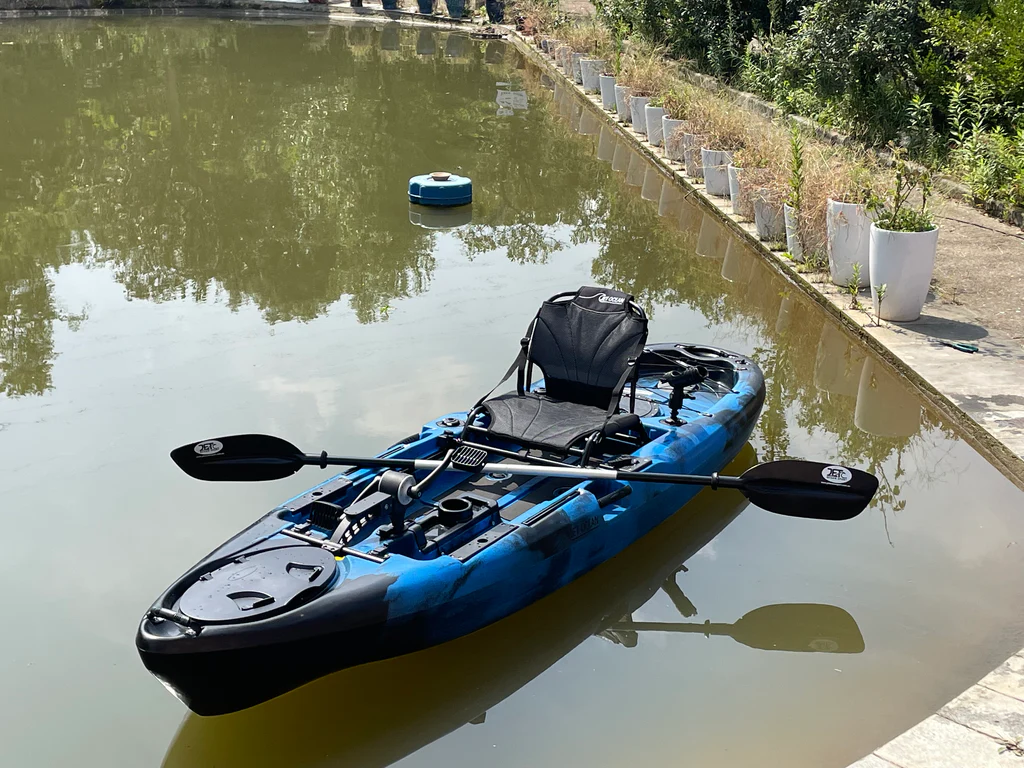
Pedal kayaks can reach speeds of 5 to 8 mph, which is considered faster than traditional paddle kayaks that typically go at 3 to 4 mph. Additionally, these kayaks are designed to be more efficient, allowing the paddler to maintain speed for longer periods of time with less fatigue.
However, the speed of a pedal kayak, or any kayak, depends on various factors. So, let’s break down the factors that affect the speed of a pedal kayak in more detail.
Factors That Affect the Speed of A Pedal Kayak
Kayak Design and Size
The design and size of a pedal kayak play a crucial role in determining its speed.
Longer and narrower kayaks are generally faster than shorter and wider kayaks due to their improved hydrodynamics. Moreover, Kayaks with a flatter bottom tend to be more stable but slower than kayaks with a V-shaped hull, which can cut through the water more efficiently.
Kayak Material
The material used to construct the kayak can also affect its speed. Lightweight materials such as carbon fiber, Kevlar, and fiberglass are often used to construct high-performance pedal kayaks, as they balance weight and strength well.
Kayak Weight and Weight Onboard
The weight of the kayak and any gear or equipment being carried can also affect its speed.
Heavier kayaks will require more effort to propel through the water and will likely achieve slower speeds. Similarly, carrying too much gear or equipment onboard can slow down the kayak.
Water and Weather Conditions
The water and weather conditions can significantly impact the speed of a pedal kayak.
For instance, paddling against the current or through rough water will require more effort and reduce the kayak’s speed.
Paddler’s Skills and Physical Ability
Finally, the paddler’s skills and physical ability are critical in determining the kayak’s speed.
An experienced kayaker with good leg strength can achieve faster speeds than those with less experience or lower physical fitness. Practicing proper techniques, such as maintaining a steady and efficient pedaling motion, can also improve the kayak’s speed.
Tips to Make a Pedal Kayak Go Faster
Here are some tips to make a pedal kayak go faster:
- Improve Technique: Proper technique can help to improve the efficiency of pedaling, leading to a faster kayak speed.
- Focus on maintaining a steady, smooth pedal stroke and using the legs to generate power while keeping the upper body relaxed.
- Optimize Kayak Design: Choose a kayak with a sleek, aerodynamic design that can cut through the water more efficiently.
- Longer, narrower kayaks tend to be faster than shorter, wider kayaks.
- Reduce Weight: A lighter kayak will require less effort to propel through the water and achieve faster speeds. Additionally, consider removing any unnecessary gear or equipment to reduce the weight onboard.
- Adjust the Trim: Adjust the kayak’s trim by moving the weight distribution slightly forward or backward to improve the kayak’s balance and reduce drag, allowing for a faster speed.
- Take Advantage of Water and Weather Conditions: Try to paddle with the current or wind direction to improve the kayak’s speed. Avoid paddling against the current or in rough water, as this can slow down the kayak.
- Increase Physical Fitness: Improving leg strength and endurance through regular exercise can help to increase the kayak’s speed. Consider adding exercises such as squats and lunges to your workout routine.
By considering the previously mentioned factors and implementing these tips, you can improve your speed in a pedal kayak and enjoy a more efficient paddling experience.
Kayak your way to Freedom
- On a budget? Check out the best fishing kayaks under $500 here and the best Fishing Kayaks under $1,000 here. Or Check the best Cheap Kayaks here.
- Going fishing? Here are the best Ocean fishing kayaks, and here are the best River Fishing Kayaks.
- You can also find the best Fly Fishing Kayaks here and the best Bass Fishing Boats here.
- A bit experienced? Check out the best modular kayaks here and the best tandem fishing kayaks here.
- Looking for something special? Check out my favorite Ducky kayaks here.
- Navigate your way with these awesome and beginner-friendly Kayak compasses.
- Going Hunting? These Duck hunting kayaks will give you an unfair advantage!
- Have a need for speed? These motorized kayaks will get you moving.
- Protect yourself from the sun with these Kayak shades, and make your kayak more comfortable with these Kayak seats.
- Keep your feet dry and warm with these superb Kayaking shoes.
- Going Kayaking in cold water? Stay warm with these Kayaking gloves.
- Paddle Less, Fish More with the Best Kayak Motors
- Looking to get a trolling motor on your kayak? Check out the best kayak trolling motor mounts here.
If you like this article, please share it or pin it, you can find the share buttons below. We will really appreciate it ❤️

